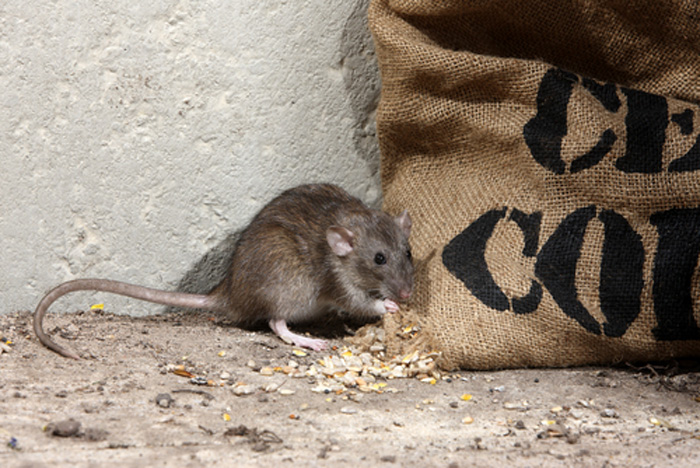Real-Time Pest Detection In Businesses: Stay Ahead Of Infestations
Share
In today's fast-paced world, staying ahead of challenges is crucial for businesses, especially when it comes to ensuring sanitary and pest-free environments. **Real-time pest detection in businesses** is not just a luxury but a necessity for maintaining reputation and operational integrity. Pest infestations can lead to a myriad of problems for businesses, ranging from health issues to financial losses. Fortunately, advancements in technology offer innovative solutions to address these concerns effectively.

Why Real-Time Pest Detection is Essential
Pests such as rodents, insects, and other unwanted creatures have always been an issue for businesses. Whether you're running a restaurant, warehouse, or any commercial facility, pests can cause damage to property, destroy inventory, and pose serious health risks to employees and customers. **Real-time pest detection** has emerged as a game-changer for businesses aiming to keep their premises pest-free. This modern approach significantly reduces the risks associated with infestations by providing immediate insights and actions to be taken, ensuring a healthier environment and protecting company assets.
How Real-Time Detection Works
Modern pest detection systems utilize a range of technologies, including IoT devices, sensors, and cameras, to monitor environments continuously. These systems collect data and analyze it in **real-time**, enabling businesses to identify potential pest activities instantly. For example, businesses can now use these systems in **warehouses** to create an AI-powered defense mechanism against rodents (source). This proactive approach helps in taking immediate corrective measures, preventing a full-blown infestation.
Technology Behind Real-Time Pest Detection
Real-time pest detection systems rely on a combination of **sensors**, cameras, and analytical software to detect unusual activities indicative of pest infestations. These systems are often integrated with mobile applications, allowing business owners and facility managers to receive instant alerts on their devices. This method is efficient and reliable, making it possible for businesses to manage pest control remotely and effectively.
Apart from sensors and cameras, some businesses are incorporating bait and glue combinations for rodent control, offering a seamless transition from detection to prevention (source). Such integrated systems not only detect but also provide the means to tackle the pest problems in a comprehensive manner.
Advantages of Real-Time Pest Detection
The benefits of implementing **real-time pest detection** in businesses are vast. First and foremost, it helps in protecting the companys reputation, especially businesses in sectors where hygiene and cleanliness are paramount. A swift response to pest sightings can prevent negative reviews and improve customer trust.
Another advantage is the cost-effectiveness of preventive measures compared to dealing with an established infestation. Implementing real-time systems saves businesses from massive financial losses and reduces the need for frequent manual inspections that might disrupt regular operations.
Lastly, real-time detection aids in maintaining compliance with health and safety regulations, particularly in industries such as food processing, where pest control is critical to operations (source). Ensuring compliance not only avoids legal issues but also promotes a healthier working environment.
Common Challenges and How to Overcome Them
Implementing a real-time pest detection system is not without its challenges. Businesses might face initial setup costs, data privacy concerns, and the need for regular system maintenance. However, the long-term benefits far outweigh these initial hurdles. Selecting the right technology partner and customizing the system according to the specific needs of the business can mitigate most of these issues.
Additionally, integrating real-time monitoring with **traditional pest control** strategies enhances effectiveness. For instance, using both **snap traps** and real-time alerts provides a dual approach that is both immediate and strategic (source). Businesses can leverage such hybrid systems to ensure comprehensive pest management.
Tips for Choosing the Right System
When considering a real-time pest detection system for your business, take into account several factors: the type of pests you are dealing with, the size and layout of your facility, and any industry-specific regulations. Consulting with experts can help in designing a system that fits your unique circumstances. Be sure to choose a system that is scalable, adaptable, and provides actionable insights to maintain an edge over potential pest threats.
If you're unsure where to start, it's advisable to consult providers who specialize in business-specific pest management to obtain solutions tailored to your industry needs. Many companies provide comprehensive systems designed specifically for manufacturing and logistics sectors, making them ideal for those industries (source).
Conclusion
Investing in **real-time pest detection in businesses** is an investment in the future. Not only does it safeguard your business from potential infestations, but it also demonstrates a commitment to maintaining high standards of cleanliness and safety. The implementation of such advanced systems is a proactive measure that all businesses should consider to stay competitive and secure in an increasingly hygiene-conscious market.

FAQ Section
-
What is real-time pest detection?
Real-time pest detection involves using technology such as sensors and cameras to continuously monitor an area for pest activity, providing instant alerts when unusual activities are detected. -
Why is pest detection important for businesses?
It helps in maintaining hygiene standards, protecting reputation, ensuring compliance with health regulations, and preventing financial losses due to inventory damage or contamination. -
How does real-time pest detection improve safety in food processing plants?
It provides immediate detection of pests, enabling swift action to prevent contamination and ensure compliance with food safety regulations.
This article contains affiliate links. We may earn a commission at no extra cost to you.
